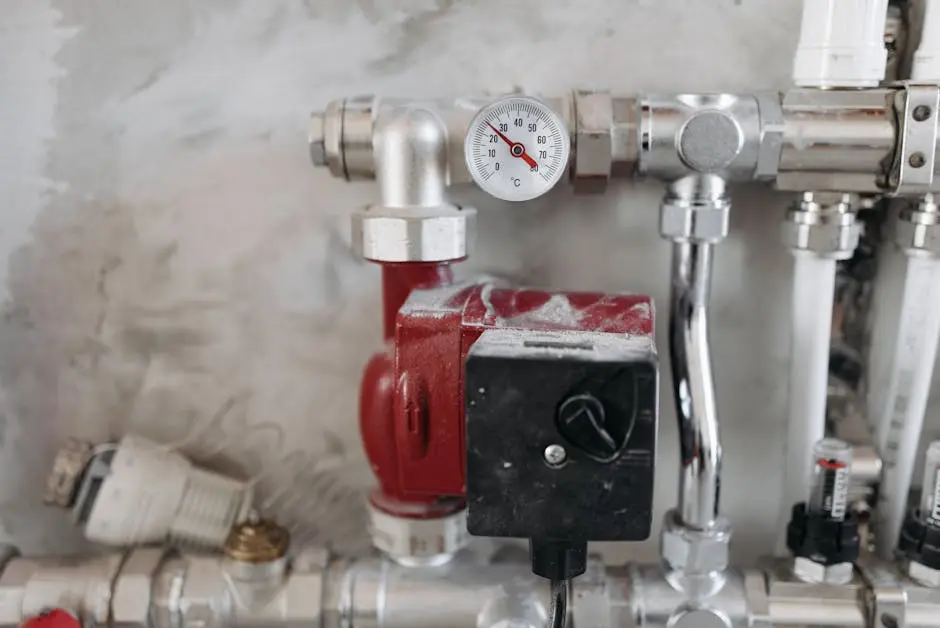A Guide to Backflow Preventer Repair and Water Conservation in Dallas
Is your water system in Dallas protected from potential contamination? Backflow prevention is crucial for ensuring clean and safe water. In this guide, we'll explore the essentials of backflow preventer repair and how it contributes to water conservation in Dallas. Whether you're a homeowner or a business owner, understanding this topic is key to safeguarding your water supply.
Understanding Backflow and Its Risks
Backflow occurs when water flows in the opposite direction of its intended path. This reversal can introduce contaminants into the clean water supply, posing serious health risks. In Dallas, where water conservation is a priority, preventing backflow is an essential practice. It's important to understand that backflow can occur due to changes in pressure within the pipes, which might be caused by a break in the main line or during high demand, such as firefighting activities. If preventative measures aren't taken, harmful substances like fertilizers and chemicals from lawns, or bacteria from sewer lines, can infiltrate the clean water supply and make it unsafe for consumption.
The complexity of our water infrastructure means it can be susceptible to backflow incidents, but with proper systems in place, these can be mitigated effectively. Key factors that contribute to backflow include insufficient pressure maintenance and faulty valves, which create vulnerabilities in the network. Ensuring each connection point within the system is secure and equipped with functional backflow preventers drastically reduces these risks.
The Role of a Backflow Preventer
A backflow preventer is a device designed to stop potential contaminants from entering the potable water supply. It acts as a barrier, ensuring water only flows in the appropriate direction. Regular maintenance and timely repair of these devices are crucial to their effectiveness. In residential areas, a common type of backflow preventer used is the pressure vacuum breaker. This device is particularly effective for outdoor irrigation systems and helps maintain clean water in homes by preventing cross-contamination from lawn fertilizers or pesticides entering the home's plumbing system.
For businesses, especially those in the food or healthcare industries, backflow preventers are not just recommended; they're a necessity. Installing these devices can help businesses meet local health regulations and avoid costly fines. An effective backflow prevention strategy requires not only the installation of the correct devices but also regular testing and maintenance to ensure they are working properly. This proactive approach safeguards both employees and customers by maintaining a contamination-free water supply.
Signs Your Backflow Preventer Needs Repair
Detecting issues early can prevent costly repairs and ensure water safety. Common signs of a malfunctioning backflow preventer include unusual water flow, strange noises, or leaks. Knowing what to look out for can help you address problems before they escalate. Pay attention to unexplained drops in water pressure or discolored water, as these can be early warning signs of potential backflow or contaminants entering your water supply.
External factors such as seasonal changes can impact the functionality of backflow preventers, especially in Dallas, where weather fluctuations can be significant. During winter, for example, the risk of frozen pipes can increase pressure changes within the system, stressing the preventer. As spring approaches, ensure your backflow preventer is inspected for damage, such as cracks or warping, which can indicate it requires repair or replacement. Utilizing qualified professionals for inspections can be beneficial in diagnosing issues that may not be immediately apparent. They can offer expert solutions that maintain your water system’s integrity.
Steps to Repair a Backflow Preventer
While some repairs may require professional assistance, there are basic steps you can take if you suspect an issue. These include checking for visible damage, ensuring connections are tight, and removing any obstructions. Always prioritize safety when attempting DIY repairs. Start by shutting off the water supply before you begin, to prevent any accidents. Once that's done, disassemble the preventer by removing the cap and inspecting the internal components. Look for worn or damaged parts, such as seals or springs, which can be replaced with new ones available from most hardware stores.
After the initial inspection, use this opportunity to clean any sediments or mineral deposits that may have accumulated inside the preventer. A simple vinegar solution can effectively remove stubborn buildup, increasing the device’s longevity and functionality. If the issue seems beyond your ability to fix or if the backflow persists, calling a professional is advisable to conduct a thorough repair. They can assess whether a complete replacement is necessary and help you comply with local regulations. Remember, meticulous attention to the state of your backflow preventer is an investment in the safety of your water supply.
Water Conservation Tips for Dallas Residents
Water conservation goes hand-in-hand with maintaining a backflow preventer. Simple practices like reducing water usage, fixing leaks promptly, and using water-efficient appliances can make a big difference in preserving Dallas's precious water resources. For instance, consider installing low-flow fixtures in your home, which can significantly reduce water waste without sacrificing performance. By making these small changes, combined with maintaining proper backflow systems, your household can make a substantial positive impact on local water conservation efforts.
Moreover, adopting a smart landscaping strategy can further bolster water conservation. This involves selecting drought-resistant plants and implementing efficient irrigation techniques, such as drip or low-pressure watering systems, to minimize unnecessary water use. Educating family members about simple water-saving habits, like turning off the tap while brushing teeth and taking shorter showers, reinforces a conservation mindset. These collective efforts not only contribute to sustainable water management in Dallas but also help reduce utility costs over time, making water conservation a win-win situation for all.
Protecting Our Water, Protecting Our Future
Understanding and maintaining backflow preventers is not only a matter of compliance but a significant step towards water conservation in Dallas. By following the guidelines provided in this guide, you can contribute to a safer and more sustainable water system for everyone. Visit our homepage to learn more about our commitment to water safety and conservation.

